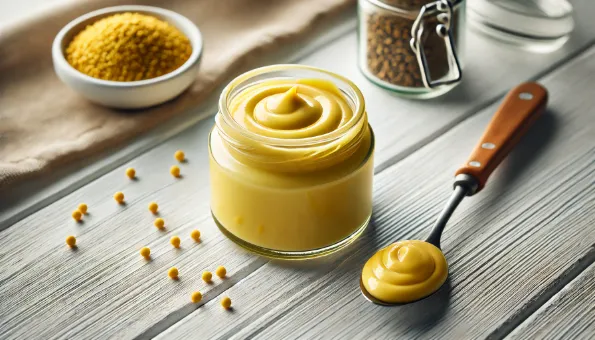Mustard: Spicy Seeds & Classic Condiment
Tiny seeds that pack heat—used whole, ground, or as prepared mustard; rich in flavor and bioactive compounds.

What Is Mustard?
Mustard comes from the seeds of several *Brassica* species: **white/yellow, brown, and black mustard**. The seeds are used whole for tempering, ground into spice powders, or processed into the familiar **prepared mustard condiment**.
Nutrition (per 1 tbsp seeds ~10 g)
- **Calories:** ~55
- **Protein:** ~3 g
- **Fat:** ~3 g (healthy fats)
- **Fiber:** ~2 g
- Contains selenium, magnesium, isothiocyanates (bioactive plant compounds)
Benefits
- **Rich in phytonutrients:** may support detoxification enzymes
- **Adds flavor with minimal calories**—good for reducing added salt/fat
- **Good source of selenium & magnesium** (support thyroid and muscle function)
Considerations
- Strong flavor—can overpower dishes
- May cause mild heartburn in sensitive individuals
- Prepared mustard can be **high in sodium**—check labels
How to Use
- **Seeds:** toast in oil for Indian tadka, pickling spice mixes
- **Powder:** mix with water to make fresh mustard paste
- **Prepared mustard:** sandwiches, dressings, marinades
- Pairs well with honey, vinegar, meats, root vegetables
Summary
Mustard is a versatile ingredient—spicy, tangy, and full of beneficial plant compounds. Excellent for flavoring and for culinary creativity.
- 1. Mustard
mustard – sjemenke gorušice (bijele, smeđe, crne) i proizvodi od njih (senf kao začin); bogate izotiocijanatima i mineralima

